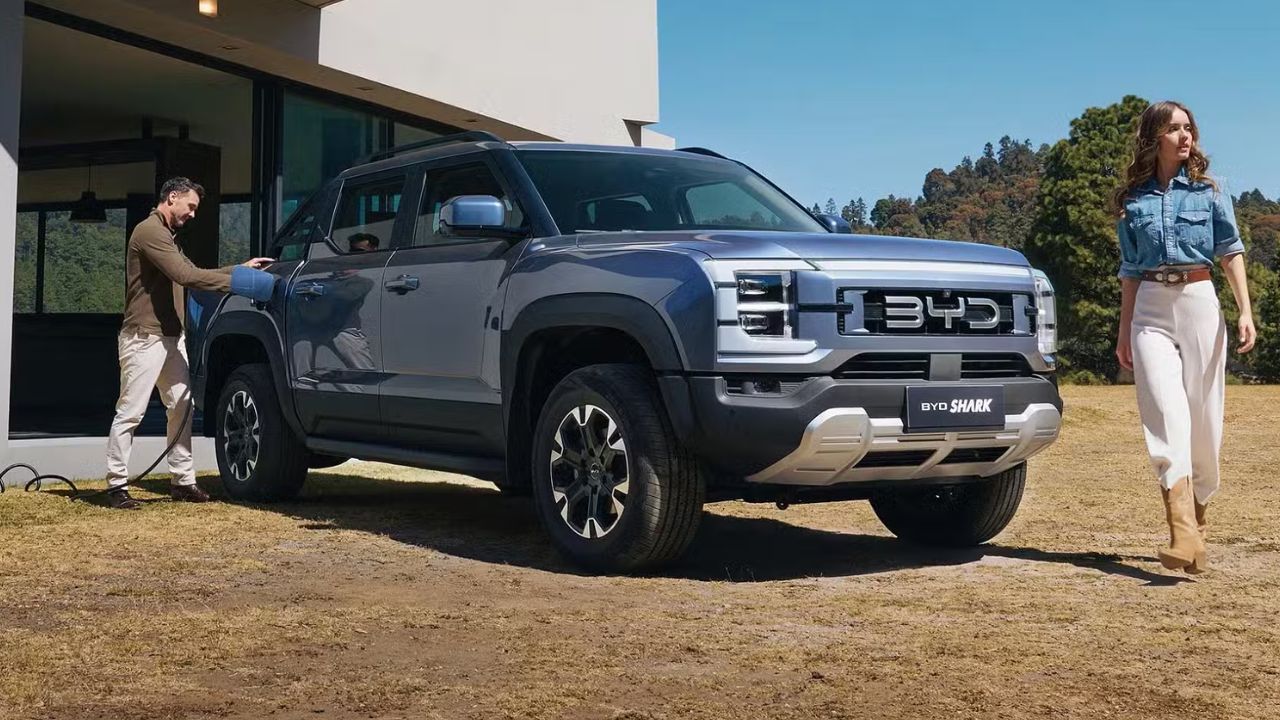The highly anticipated BYD Shark 6, Australia’s first plug-in hybrid (PHEV) ute, has finally begun customer deliveries. However, the excitement surrounding this milestone is tempered by looming challenges that threaten to slow down the rollout. This article explores the current state of BYD Shark 6 deliveries in Australia, the obstacles faced, and what this means for the future of electric vehicles in the country.
A Promising Start
The first BYD Shark 6 was handed over to its proud owner in Brisbane, marking a significant moment for both BYD and the Australian automotive market. Priced competitively at $57,900 before on-road costs, the Shark 6 has generated substantial interest among Australian consumers. EVDirect, BYD’s exclusive distributor in Australia, reports an impressive order bank of over 5,500 vehicles since opening the books in October 2024.
The Shark 6 boasts impressive specifications that have contributed to its popularity:
A powerful PHEV drivetrain producing 321kW and 650Nm of torque
An electric-only range of 100km (NEDC)
Fuel economy as low as 2.0L/100km when running as a hybrid
A braked towing capacity of 2,500kg
These features position the Shark 6 as a strong competitor in the ute market, challenging established players like the Ford Ranger and Toyota HiLux.
Immediate Challenges
Despite the initial success, BYD faces significant hurdles in meeting the high demand for the Shark 6:
Port Strikes: Ongoing industrial action at Australian ports has stranded thousands of vehicles, including shipments of the Shark 6. This has forced future deliveries to anchor offshore until the strikes are resolved.
Delivery Delays: Under normal circumstances, EVDirect aimed for a 6-8 week turnaround from order to delivery. However, the port strikes have thrown this timeline into uncertainty.
Supply Chain Pressure: The unexpected high demand, coupled with delivery obstacles, may strain BYD’s supply chain and production capacity.
Impact on the Australian Market
The introduction of the BYD Shark 6 and its initial success have several implications for the Australian automotive landscape:
PHEV Adoption: As Australia’s first PHEV ute, the Shark 6 could accelerate the adoption of electrified vehicles in a segment traditionally dominated by diesel engines.
Market Disruption: BYD’s aggressive pricing and feature set may force established manufacturers to reconsider their strategies, potentially leading to more competitive offerings.
Chinese Brand Perception: The success of the Shark 6 could further improve perceptions of Chinese automotive brands in Australia, following the positive reception of other BYD models.
Looking Ahead
Despite the current challenges, the future looks promising for BYD and the Shark 6 in Australia:
EVDirect aims to double BYD’s sales in Australia, targeting around 40,000 units in 2025.
The Shark 6 is expected to become BYD’s best-selling model, potentially surpassing the popular Seal electric sedan.
BYD plans to introduce more models, including the all-electric Sealion 7 SUV, further expanding its presence in the Australian market.
However, the success of these plans hinges on resolving the current port strikes and ensuring a smooth supply chain for future deliveries.
The commencement of BYD Shark 6 deliveries in Australia marks a significant milestone in the country’s transition to electrified vehicles. While immediate challenges threaten to slow down the rollout, the strong demand and positive reception suggest a bright future for BYD and PHEVs in the Australian market. As the situation evolves, all eyes will be on how BYD navigates these hurdles and whether it can maintain its momentum in this competitive landscape.
